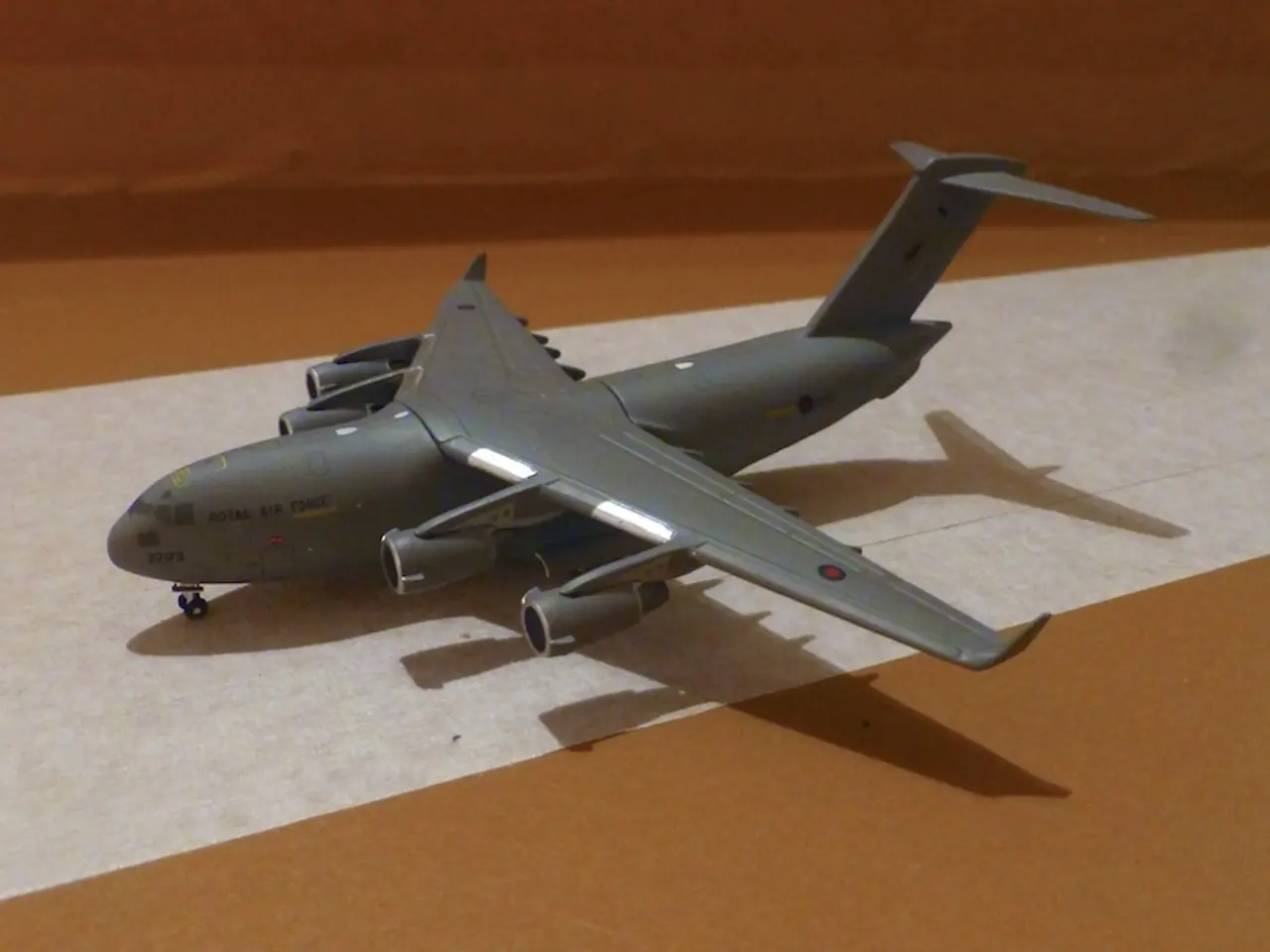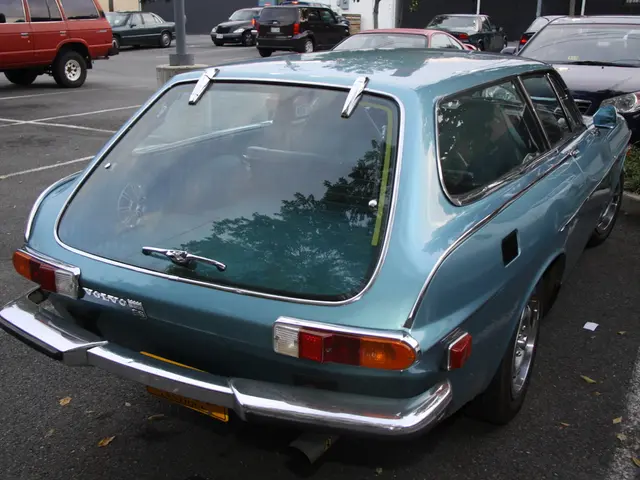Airborne Launch System for Future Fighting Jet: A400M Successfully Passes Initial Test as Remote Vehicle Carrier
Airbus A400M Demonstrates Drone Launch Capability in Preparation for Future Combat Air System
The Airbus A400M, a versatile multi-role airlifter, has taken a significant step forward in its development, demonstrating the ability to air-launch a drone as part of its preparations for the Future Combat Air System (FCAS).
The latest test, conducted in a joint effort between Airbus and the German Air Force, marked the first successful application of manned-unmanned teaming (MUM-T) in Europe, with an Eurofighter networking with and tasking two Do-DT25 drones in real-time during the Timber Express exercise.
The A400M is envisioned to play a significant role in MUM-T and airborne drone launches within the FCAS framework. This expanded role complements its traditional missions like airlift, refueling, and troop transport.
The A400M's large cargo bay is expected to be able to hold 40 or more Remote Carriers, providing it with the capacity to deploy large numbers of these drones. Airbus plans to continue validating the A400M as an airborne launch platform for Remote Carriers.
The key steps towards using Remote Carriers as force multipliers within the FCAS include validating connectivity, human-machine interface, and the concept of teaming intelligence through mission group management. These advancements will allow Remote Carriers to operate in concert with manned aircraft, opening new fields of tactics.
During the recent test, an Airbus-built drone was deployed from an A400M's opened rear cargo ramp door while airborne. The drone's parachute opened shortly after launch, delivering it safely to the ground. The new Modular Airborne Combat Cloud Services (MACCS), an Airbus product, enabled full connectivity between the airlifter and the drone.
The next flight test for the A400M as an airborne launch platform for Remote Carriers is planned to happen this year. This test will further validate the A400M's potential as a mothership for unmanned aerial systems, supporting MUM-T concepts where manned aircraft coordinate and control drones to extend surveillance, targeting, and strike capabilities beyond what a single platform can achieve alone.
The FCAS is a wide-ranging European project aiming to develop interconnected combat air capabilities involving manned fighters, unmanned systems, and networking solutions. The A400M’s ability to launch, refuel, and control drones fits the vision of a multi-domain combat cloud architecture where platforms share data and coordinate missions seamlessly.
Beyond drone operations, the A400M supports diverse configurations including cargo and troop transport, medical evacuation, and electronic surveillance, offering operational flexibility required by future combat systems. The A400M already has demonstrated capabilities like air-to-air refueling (including recently for helicopters), extended range, and carrying large payloads, which can underpin its use as a launch platform and control node for unmanned systems over extended missions.
In summary, the Airbus A400M is expected to complement the FCAS by serving as a manned platform that launches, controls, and sustains drone operations, enabling enhanced collaborative combat scenarios between human pilots and autonomous systems through MUM-T concepts.
- The Airbus A400M's demonstration of drone launch capability is a significant step towards its role in the Future Combat Air System (FCAS), where it will likely serve as a manned platform for launching, controlling, and sustaining drone operations.
- Airbus' continued validation of the A400M as an airborne launch platform for Remote Carriers is essential for the key steps towards using these drones as force multipliers within the FCAS, including validating connectivity, human-machine interface, and the concept of teaming intelligence.








